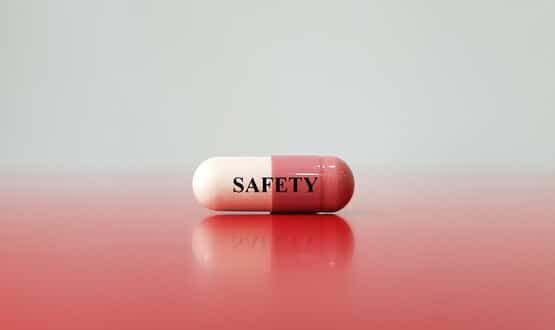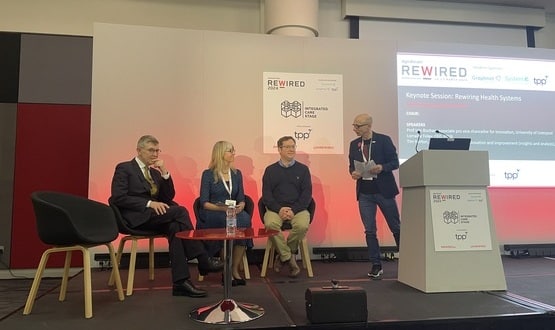Government abandons contact-tracing app for Apple and Google’s tech
- 18 June 2020

The government has abandoned its model for the NHS contact-tracing app and switched to Google and Apple’s technology.
It is believed the government will be working with the tech giants to develop a companion app that supports the “end-to-end” NHS test and trace service.
The government had been running field tests on both versions of the technology, alongside the NHS contact-tracing app trial in the Isle of Wight, to determine which approach was better.
Tests revealed issues with both technologies in judging the distance and duration between devices and issues with the NHS version being accurate on iPhones.
The NHSX version was able to register about 75% of nearby Android devices, but just 4% of iPhones. The Apple and Google model was more accurate, logging 99% of Android devices and iPhones, but had difficulty measuring the distance between users’ devices.
It was thought neither technologies were fit for purpose and a further companion app will be developed to support users’ throughout the entire journey, from initial contact through isolation.
Working with Apple and Google will allow for the development of an app to ‘bring together the functionality required to carry out contact tracing, but also making it easy to order tests, and access proactive advice and guidance to aid self-isolation’, according to the Department of Health and Social Care.
A parallel version of the NHS contact-tracing app using Apple and Google’s technology has been in the pipeline since early May.
The team leading the test and trace system, including the apps development, said it does not believe the decision will set the UK back in its contact-tracing efforts.
In a joint statement Baroness Dido Harding, chair of the test and trace service, and NHSX CEO Matthew Gould, said their ambition was to develop an app that would ‘enable anyone with a smartphone to engage with every aspect of the NHS test and trace service’.
“Our response to this virus has and will continue to be as part of an international effort. That is why as part of a collaborative approach we have agreed to share our own innovative work on estimating distance between app users with Google and Apple, work that we hope will benefit others, while using their solution to address some of the specific technical challenges identified through our rigorous testing,” they said.
“We will also draw on the invaluable insight from all of those who trialled the app on the Isle of Wight – and the brilliant teams who have worked on it to date – to build an app that can form part of the end-to-end NHS Test and trace service and this insight will be integral to the next phase of development.”
Health secretary Matt Hancock added: “As we enter this next phase of research and development we remain determined to continue in our ambition to develop an app which meets the technical, security and user needs of the public and which can complement the NHS test and trace service.
“Countries across the globe have faced challenges in developing an app which gets all of these elements right, but through ongoing international collaboration we hope to learn, improve and find a solution which will strengthen our global response to this virus.”
Change of course?
The major U-turn comes after it was revealed a former Apple executive, Simon Thompson, would be taking charge of running the programme.
Gould and app lead Geraint Lewis are stepping back from the app to resume other duties, according to the BBC.
The debate over whether a centralised or decentralised approach to contact-tracing should be used has plagued NHSX in its development of the UKs app.
The NHS opted for a centalised approach, which would see data collected from the app sent to a central database for analysis.
Apple and Google’s decentralised contact-tracing model has been heralded as being more secure, but means epidemiologists have access to less data.
Unknown dates
The reported change won’t impact the interface presented to users, but a further roll-out date for the app is still unknown.
Speaking at parliament’s science and technology committee this week, Lord Bethell, the Minister for Innovation at the Department of Health and Social Care, said the app was “not the priority” for government and couldn’t say if it would be in place by winter.
“We’re seeking to get something before the winter, but it isn’t the priority for us at the moment,” he said.
He said there was a danger of getting “too technological” adding that recent findings through the track and trace system indicated people prefer a “personal touch”.
“One of the things we’re learning is that people like to have a personal touch, they like to have a telephone call rather than a text and we’re building on that particular insight to make sure that local connectivity is in place,” he said.
From major player to ‘icing on the cake’
The app had been touted as a major part of the government’s test and trace system, but when the system was launched on 28 May the app was noticeably absent. The importance of the app has since been downplayed with health secretary Matt Hancock saying that the app would be brought in “when it is right to do so”.
A trial of the app was launched on the Isle of Wight on 4 May, with health secretary Matt Hancock and NHSX chief Matthew Gould both saying a national roll-out was expected by mid-May.





1 Comments
What took them so long to come to this decision, pretty obvious even to a nonagenarian outsider like me for over a month?
Comments are closed.